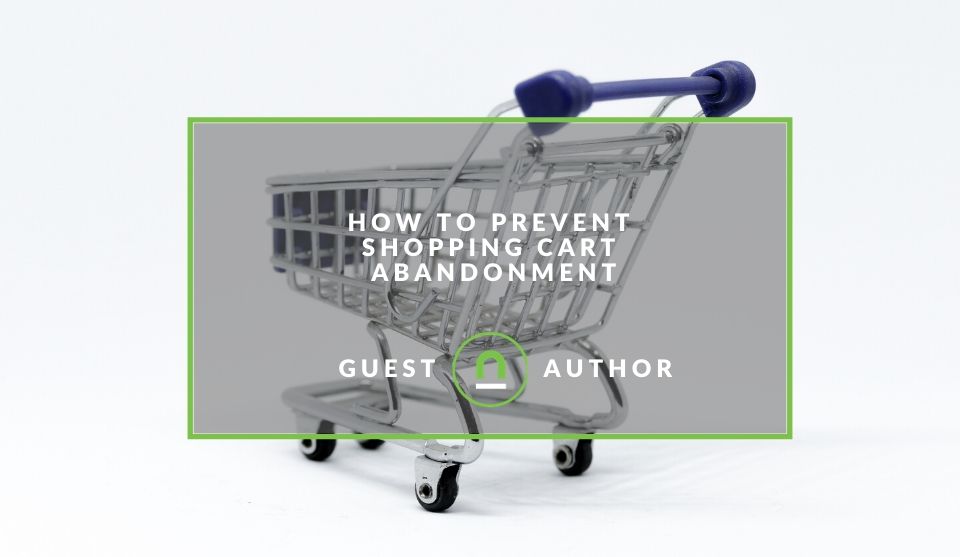Recent posts

nichemarket Advice
The South African VAT Threshold Chokehold
05 December 2025

Doctors Orders
The Difference Between SOAP Notes and DAP Notes
02 December 2025

Petrol heads
Why Load Bin Accessories Make Your Bakkie So Much Easier to Live With
26 November 2025

Alarming
What Is The Part Time Job WhatsApp Scam?
25 November 2025
Popular posts
Extravaganza
Trending Music Hashtags To Get Your Posts Noticed
24 August 2018
Geek Chic
How To Fix iPhone/iPad Only Charging In Certain Positions
05 July 2020
Extravaganza
Trending Wedding Hashtags To Get Your Posts Noticed
18 September 2018
Money Talks
How To Find Coupons & Vouchers Online In South Africa
28 March 2019
How to Prevent Shopping Cart Abandonment
18 February 2020 | 0 comments | Posted by Isabel Ramos in Shopaholics
E-commerce continues to revolutionise the ways people shop online. Businesses are turning to mobile apps and websites to maintain a steady customer base who enjoy the convenience of purchasing products without leaving the comfort of their homes. But, while small and large online merchants find success in driving traffic to their online sites, making the customers continue buying products is a different story.
Research by the Baymard Institute reveals that 69.57% of e-commerce visitors abandon their shopping carts. This research shows that less than a third of people who shop online actually complete their purchases. In 2015, Business Insider said that losses due to shopping cart abandonment amounted to about $4 trillion worth of merchandise.
So, what’s keeping online customers from actually checking out, and how can online merchants solve the shopping cart abandonment mess? Here’s a more in-depth look into the root causes of the problem, and what online stores can do to boost sales.
Be transparent about all costs
The same Baymard study shows that 51% of shoppers end up abandoning their carts because the extra costs turned up way higher than they expected. In times of uncertainty of customers, the expectation is where transparency makes all the difference. It would help if you let your online buyers know early on exactly how much they need to pay to get the product. Costs customers need to know about includes shipping, taxes, and all other fees.
Free shipping entices most consumers, so it will be useful to offer this feature as often as you can. Adding a price calculator at the beginning of the checkout also helps consumers see all costs upfront. Being transparent about all additional charges will help your online store create a good impression and build your credibility as a retailer.
Simplify the process
A long and tedious process that requires online consumers to register and fill out loads of information will keep your potential buyers from checking out. Formstack analysed data from forms created by millions of their users. The study reveals that online merchants can boost their conversions by 160% if they reduce the number of form fields to four or fewer.
Optimise your checkout process by ensuring that all online forms are user-friendly. Allow online shoppers to view products and details throughout each step of the checkout. A lower barrier to access will help them track the progress they have made and encourage them to finish the process.
Require only the necessary information so you can minimise fields. Don’t force users to register. Instead, allow them to use the check out as guests feature. Make sure that online users can easily navigate your website and mobile channels. Online shoppers have short attention spans, and they will most likely go for sites with optimal speed and functionality.
Build trust
Security remains a priority for both online sellers and buyers. Two of the other reasons why online users abandon their shopping carts are the lack of trust and fear that their personal and financial information will be compromised—47% of online users look for trust marks when shopping on lesser-known websites, according to one study by McAfee.
Give your online consumers the confidence that you are reliable and secure by displaying your trust logos and badges. These visual pieces of evidence will assure your online consumers that they are shopping on a website verified by authorised organisations. Plus, it also shows how serious you are about protecting your business.
Some of the most effective trust marks and badges include the Norton Secure Seal, the PayPal logo, and the McAfee seal. You can also build trust and authenticity by giving online consumers detailed shipping and return policies that are easy to understand.
Maximise email marketing and retargeting
A Business Insider report shows that 63% of abandoned shopping carts are recoverable. Email reminders are some of the simplest yet most effective strategies to win back your online customers and generate sales. Find the right timing to send creative and personalised email campaigns that lead customers back to the site and their orders.
Focus on how your online store prioritises value-oriented shopping. Develop a strategy that allows you to follow up without pressuring the online consumer persistently. If you have the budget, you can also offer them some great discounts and good deals.
Targeted display ads can also help convince your customers to push through with their online purchases. This remarketing strategy lets you use saved cookies to make eye-catching online advertisements that the user will see in search engines, social media sites, and other web pages.
Aside from the opportunity to win back customers, this technique also helps you raise awareness and generate engagement for your products.
Give price comparisons and discounts
Exclusive discounts are good ways to make your online users want to purchase the items they left in their shopping carts. Make sure that you give all the relevant details about the discount, including codes, coupons, and expiry dates.
Comparing prices with other competitors will also let your consumers see the importance of choosing the best quality products at affordable prices. Links to customer reviews and testimonials are also powerful methods.
Easy saving options and purchase methods
Offer saving cart options in both desktop and mobile interfaces. This way, consumers can easily view the items they left in their carts after logging out from your online store. Make sure that online consumers know how many days they have before their cart empties so that they know precisely when they need to pay.
Having multiple payment options also helps to increase consumers’ trust in the online selling site. Make sure that you give customers a user-friendly payment experience, especially in mobile platforms. Conveniences like these will help put your online store on top of consumers’ minds when they want to shop anywhere and at any time.
Understanding the needs and preferences of online consumers will help you identify leaks in your conversion funnel and prevent consumers from abandoning their carts. Give your consumers the confidence to trust you by being transparent and providing all trust marks from the get-go.
Build your credibility through simple yet purposeful marketing campaigns. Last but not least, provide your consumers with user-friendly tools that are guaranteed to boost your checkout rates.
About the author
Isabel has a passion for writing about lifestyle and shopping. She enjoys meeting new people and hearing different stories.
Tell us your story
Would you like to write for nichemarket just like Isabel has? Find out how to submit a guest post and when you're ready, you can contact us.
Let us help you
Should you require help setting up or improving your sites conversion rate, we're happy to help, feel free to contact us. for a consultation.
Are you looking to promote your business?
South African retail business owners can create your free business listing on nichemarket. The more information you provide about your business, the easier it will be for your customers to find you online. Registering with nichemarket is easy; all you will need to do is head over to our sign up form and follow the instructions.
If you require a more detailed guide on how to create your profile or your listing, then we highly recommend you check out the following articles.
Recommended reading
If you enjoyed this post and have a little extra time to dive deeper down the rabbit hole, why not check out the following posts about eCommerce.
- Set Up An Abandon Basket Drip Marketing Campaign
- 5 Benefits Of Using CRM For Your Business
- 10 Emails Every eCommerce Site Should Have
Tags: eCommerce , Guest Post
You might also like
The Difference Between SOAP Notes and DAP Notes
02 December 2025
Posted by Che Kohler in Doctors Orders
A look at SOAP format, which remains the classic choice for healthcare professionals, while DAP notes offer more flexibility for mental health docume...
Read more48 Black Friday Software Deals 2025
14 November 2025
Posted by Che Kohler in Shopaholics
We put together a comprehensive list of software and digital business offering Black Friday discounts on their subscriptions or digital products this...
Read more{{comment.sUserName}}
{{comment.iDayLastEdit}} day ago
{{comment.iDayLastEdit}} days ago
 {{blogcategory.sCategoryName}}
{{blogcategory.sCategoryName}}

